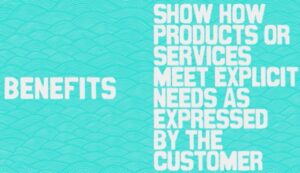SPIN Selling
by Neil Rackham, Our ActionCLASS Summary
Neil Rackham starts his book Spin Selling with some key advice: “Don’t trust what top performers tell you.
Stage 1: The Preliminaries – the warming up events at the start of the call
 Rackham suggests the preliminaries, whilst needed to break the ice, are not as critical in the successful large sale. Instead, he suggests we should focus more on how long the preliminaries take. Too short and we appear overly keen and abrasive, too long and the buyer can get bored and disengaged. So timing is critical and time is precious. As a rule of thumb, Rackham advocates that it’s best to err on the short side: no one has ever complained that a seller didn’t waste their time! Get in, focus on your objectives and get on to the more important stage: investigating.
Rackham suggests the preliminaries, whilst needed to break the ice, are not as critical in the successful large sale. Instead, he suggests we should focus more on how long the preliminaries take. Too short and we appear overly keen and abrasive, too long and the buyer can get bored and disengaged. So timing is critical and time is precious. As a rule of thumb, Rackham advocates that it’s best to err on the short side: no one has ever complained that a seller didn’t waste their time! Get in, focus on your objectives and get on to the more important stage: investigating.
Stage 2: Investigating – Where SPIN begins
Use open questions to elicit facts. We’ve all heard that advice. Avoid questions that can be answered with a simple yes or no. Structure questions so they invite description. Take a leaf from Inspector Columbo and ask questions and investigate. In essence, this is the heart of SPIN Selling… but it’s not without structure. Rackham’s methodology for investigating breaks down into four types of questions: Situation, Problem, Implication, Need-payoff (or SPIN).
Inspector Columbo and ask questions and investigate. In essence, this is the heart of SPIN Selling… but it’s not without structure. Rackham’s methodology for investigating breaks down into four types of questions: Situation, Problem, Implication, Need-payoff (or SPIN).
Situation Questions
Focus on establishing facts. Finding out the background of the customer’s situation and what they are doing now. This is critical if we are to advance our opportunity. For a small sale it’s binary – there are only two stages: Sale or No Sale. For a larger sale there are two more intermediate stages: Continuation and Advance. The continuation stage is effectively permission given to keep talking. We may not be progressing rapidly, but at least we are moving in a forward motion and it’s not a termination of talks. The Advance stage is more positive. It’s the cue to “tell me more”.
Problem identification
Is the second element of SPIN. A potential buyer who is 100% satisfied with the way things are, will not feel the need to change. Only when that level of satisfaction drops to 99.99% is there a chance of a sale. What we need to do is establish where there may be a problem, and from that problem, comes a need. It may start small with minor snags in the product or process, then develop into clear dissatisfaction and finally want, desire or intention to act. In each of these stages, the problem is amplified and the need increases. That is the objective of this stage, to ask questions to identify the problem and grow its perception to the action level. Problem identification is key. Without a clear definition of the need, there is simply no need to buy.
Implication
There are two types of need: implied and explicit. In the first type, we find more complaints. “Our current system doesn’t do X” or “I’m not happy with our product failure rate” are examples. In implied needs, there is a problem but no real identification of how it can be resolved. This is not an issue for the SPIN seller. Indeed, developing implied needs is the key to breaking down 100% satisfaction, and identifying the chink in the armour which our product or service can resolve. We need implication questions. Implication questions increase the buyer’s perception of the problem’s seriousness. Implication questions tip the balance from the status quo toward the new problem-free scenario.
Need-Payoff
These questions build up the value or usefulness of the solution. Need-payoff questions focus the buyer on problems and solutions, not problems and difficulties. Good need questions induce the buyer into personalising the benefits of the solution and with personalisation comes adoption. By asking the buyer to verbalise their thoughts we are effectively placing them as the “expert”…and everyone likes being considered an expert! This again, covertly moves the buyer to a positive decision, after all, it was their idea – wasn’t it?
Rackham reminds us, however, that for large sales many discussions on the viability of our product or service takes place without us being there. By focussing on needs when present, we align discussion to the buyer’s lens – their needs and their business – rather than to our product which perpetuates the need when we are not present.
Stage 3: Demonstrating capability
 In many sales transactions capability is demonstrated by informing the buyer of the features and advantages of the product or service. Better, however – according to Rackham – to focus on benefits. So what is the difference? Features describe facts, data and product characteristics. They are merely statements, maybe of use in a small sale but effectively neutral in larger sales. Advantages show how products or services (or their features) can help the customer. These bring some positivity — but more so in small sales than larger ones. Benefits, however, show how products or services meet explicit needs as expressed by the customer.
In many sales transactions capability is demonstrated by informing the buyer of the features and advantages of the product or service. Better, however – according to Rackham – to focus on benefits. So what is the difference? Features describe facts, data and product characteristics. They are merely statements, maybe of use in a small sale but effectively neutral in larger sales. Advantages show how products or services (or their features) can help the customer. These bring some positivity — but more so in small sales than larger ones. Benefits, however, show how products or services meet explicit needs as expressed by the customer.
A major barrier that may remain at this stage of the sales transaction are objections. If we do encounter them then we’ve performed poorly in the earlier stages. Rackham says, rather than skilling up on objection handling – which is a regular focus of other sales training programmes – we should focus on objection prevention. Back to Need-payoff questions. Most objections are to solutions that don’t fit needs. The cure is simple, don’t talk about solutions until enough questions have been asked on needs. If objections are with costs then again there is a weakness in needs alignment. If the solution fully addresses a need, and that need is critically perceived by the buyer, money will be less of an issue.
Stage 4: Obtaining Commitment
The journey is nearly over. We have three more activities to carry out. 
The first is to check that we’ve covered key concerns. In larger sales, both the product and customer needs are likely to be complex. As a result, there may be areas of confusion or doubt in the buyer’s mind as commitment nears. Successful sellers take the initiative and ask the buyer whether there are any further points that need to be addressed. If none, then purchase is one step closer.
The next step is to summarise the benefits. It’s unlikely that the buyer has a clear picture of everything that has been discussed. Successful salespeople pull the threads together by summarising key points of the discussion before moving to commitment.
Finally, we need to propose a commitment. Don’t ask for an order. That is not proposing a commitment. It’s not what successful salespeople do.
Successful salespeople advance a sale. As a result of the commitment, the sale will move forward in some way. (Remember the multiple conversations?). The commitment is the highest realistic pledge they are able to give. Successful sellers don’t push beyond this point. If an order is a commitment – well done – however one step closer is better than nothing.
Further Reading:
To help develop your understanding and build your own SPIN questions I recommend the “field book” version of SPIN Selling.
It’s packed with practical advice, templates and exercises to help with implementation and building skills.
If you get stuck give me a call

ActionCLASS happens every month, it is a book club where you don’t need to read the book to get the learnings!
- Learn the essence of the book in a dynamic format
- Share your learnings
- Create your action plan
- Give & receive feedback
- Commit to take action
- Enjoy the time you saved
Go to our EVENTS page or follow us on EVENTBRITE for details of the next class.
With thanks to our partners at:




